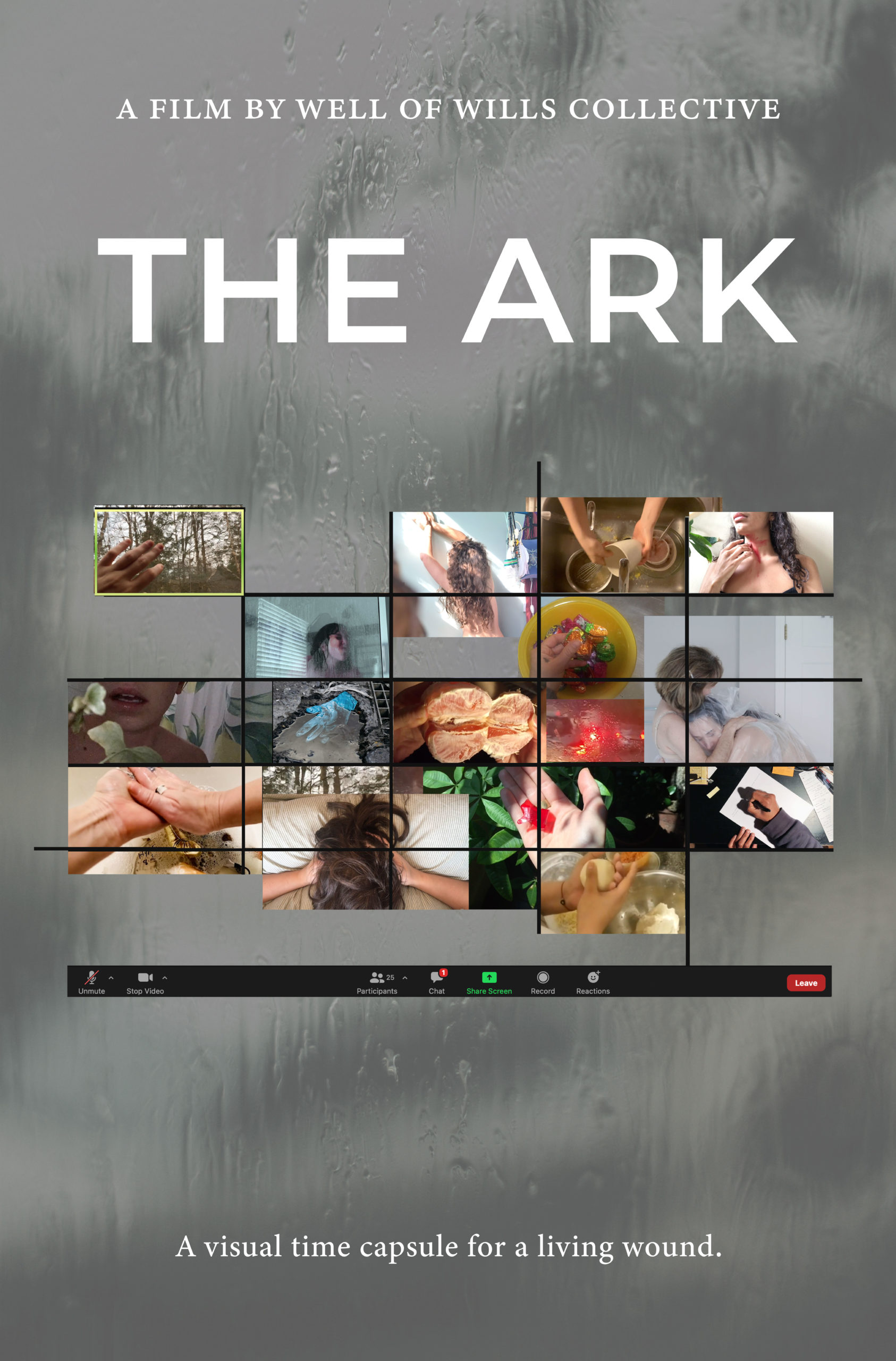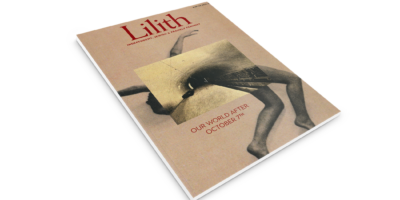
The Ark: A New Film Revisits Those First Pandemic Days
THE ARK, a new film by Well of Wills art collective, probes the role of the survivor as the end of the pandemic comes into view.
Well of Wills is a Jewish feminist art collective. Their work is developed and produced by visual artist Meirav Ong, filmmaker Hannah Roodman and interdisciplinary storyteller Nessa Norich. Their artistic practice reimagines Jewish tradition through an intersectional feminist lens. They build accessible opportunities for communities to co-create, imagine and process meaning regardless of professional training or experience as an artist.
“I am going to put your film on loop but I might not watch it until, like, this summer. I am just not ready to go there.”
I stood curbside in Williamsburg talking to a friend. Five minutes earlier, as I was passing by, her unmistakable triangular ‘fro caught my eye from her second floor window. I stood on the street gawking up, astounded that I had actually forgotten that someone I love lived so close to me. She and I used to meet at dance parties and take day trips to Riis Beach. We hadn’t texted since March 2020. What a year.
The film she is afraid to watch is The Ark, a short experimental documentary made for this precise moment. The Ark assembles video diaries from 26 artists that were generated between April and May of 2020. The artists were all participants of a free 6-week filmmaking workshop called Shared Process, described as “film school for quarantine”. On Mondays, participants received a tutorial with instructions for creating an experimental microfilm. On Fridays we met on zoom to discuss that week’s theme and filmmaking style. And on Sundays, folks submitted their films. The Ark weaves together a selection of these intimate portraits with a contemporary reading of the Jewish myth of Noah and the Ark, scaling our perspective of the current tragedy to include our ancestral stories. The film examines our collective grief and asks, “On the other side of this, who will we become?” It asks us to remember these times, even in a moment when we badly want to move on and forget.
Perhaps you feel similarly to my friend – hearing the description of the film brings up discomfort and resistance. Though viewers have called it “excruciating” and “haunting”, I would argue that that discomfort might be a good thing for us today – even a necessity. The Ark was released on April 13th, 2021. Three days earlier, a 20 year old Black man named Duane Wright was shot by police in Minneapolis. As I prepared for our film premiere – a celebration of the completion of this work – it was not lost on me that this murder, once again, opened a wound of collective heartbreak.
How do we hold celebration and grief at the same time? This is the question of Spring 2021.
One year into the pandemic, headlines declare that we are ready for the summer of love, the roaring 20s, pinatas and pina coladas in the streets. Spring has sprung in Brooklyn, I hear the phrase “hot girl summer” several times a week and 66 million Americans are vaccinated. As I throw away year-old clothes that no longer fit my thicke post-pandemic identity while fantasizing about the Donna Summers-esque entrances I will make at the parties and social events in store this summer, it is not lost on me that 550,000 Americans have lost their lives and 3 million dead around the globe have left exponentially more bereaved loved ones behind. In India and South America, the pandemic waves bring more devastation in their wake.
Pretty uncomfortable to sit with these two realities, no?
And so why is our film, excruciating though it might be, crucial for this moment? Precisely because so many of us just want to move on, feel good again and never look back. Precisely because moving on leaves a lot behind: the bereaved, the dead, the sacredness of uncertainty that taught us many lessons about our humanity.
About 120 people watched our virtual premiere live on zoom. I introduced the project nervously, completely shell-shocked by seeing all of these familiar and unfamiliar faces in windows on the screen. By now I should be used to performing on zoom, but my body and voice were shaking with the intensity of it all: of addressing the grief of this time so bluntly to a screen of windows that frame real people with tender hearts, of releasing a collective work that aimed to preserve the integrity of each artist’s contribution, while balancing a personal point of view, and evoking a universal emotion landscape. Were we about to retraumatize all of these receptive, supportive people?
How do you hold celebration and grief at the same time?
I asked myself this question throughout the day of the premiere. I was glancing in the mirror when my grandparents entered my thoughts. They were liberated from concentration camps almost exactly 76 years ago. I tried to imagine what they might have been holding in the years following their liberation: the joy of living, the grief of surviving. I know they found solace with other people who also lived this paradox. I know they chose to rebuild, while they lived by the motto “never forget”. Myths and memories are technologies that enable our ancestors to accompany us into the future. And the answer to that recurring question, How do you hold celebration and grief at the same time? floated into view:
It is not a question of how I do it. Just acknowledge it. Accept it. When I welcome that paradox, I create the space for celebration and grief to coexist without the guilt, denial and shock that may otherwise come with surviving.
You can watch the ark here: www.wellofwills.com/thearkshortfilm



